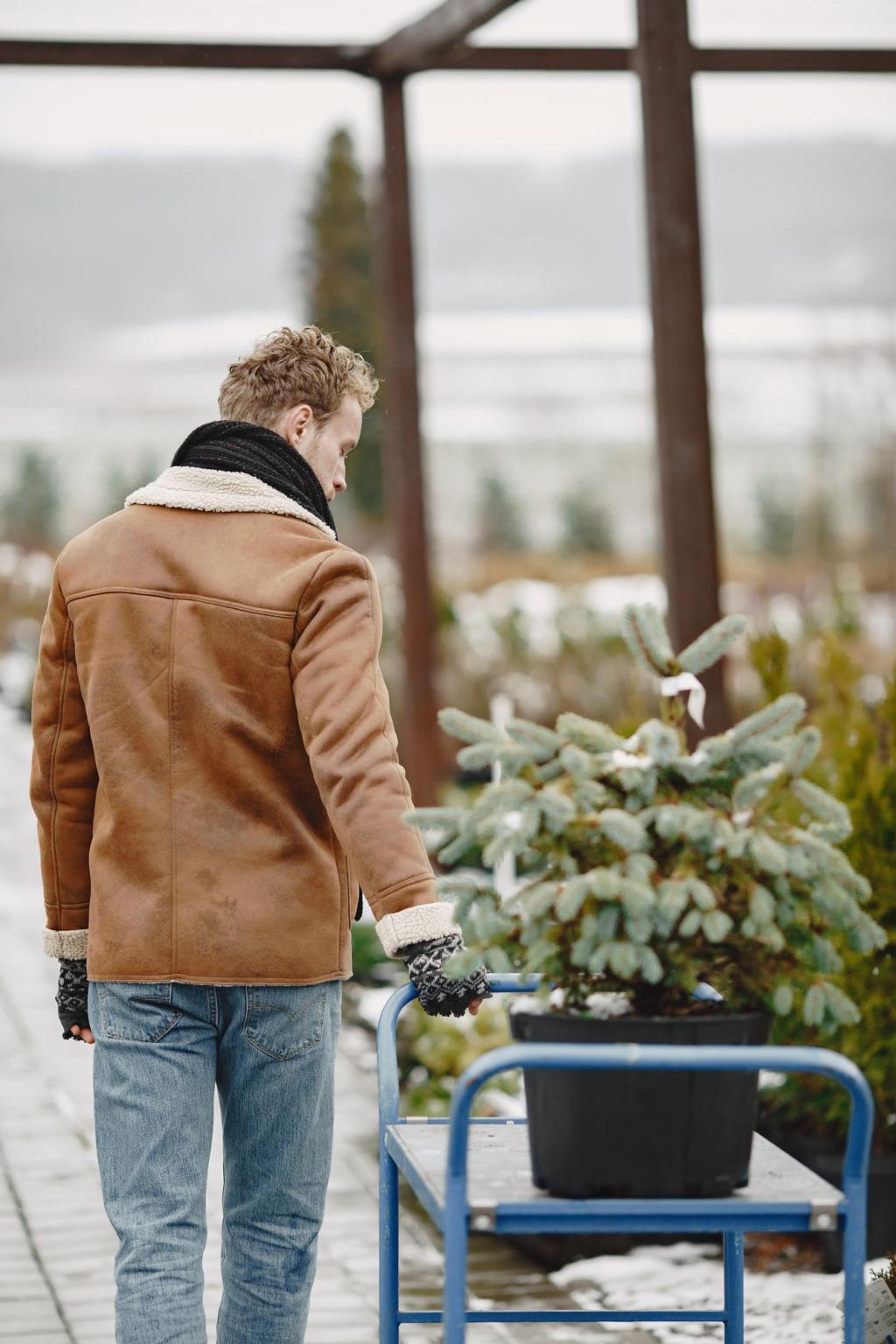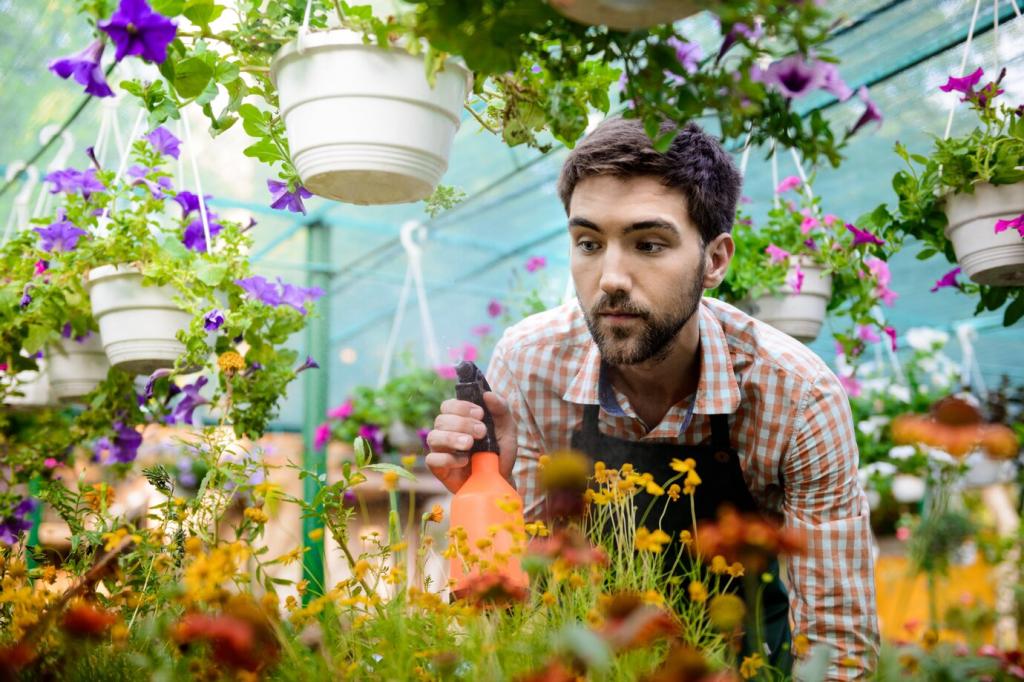
Sustainable Urban Gardening Hacks
Welcome to our comprehensive guide on sustainable urban gardening hacks. Whether you have a sprawling balcony, a compact patio, or just a few sunny windowsills, urban gardening is within your reach. This page is designed to inspire and equip you with practical strategies to cultivate a thriving green haven right in the heart of the city, all while minimizing your environmental footprint. From creative space-saving solutions to water-wise practices, you’ll discover techniques to grow more with less and foster a healthier ecosystem in your urban surroundings. Dive into these hands-on tips and embrace the joys of sustainable urban gardening!
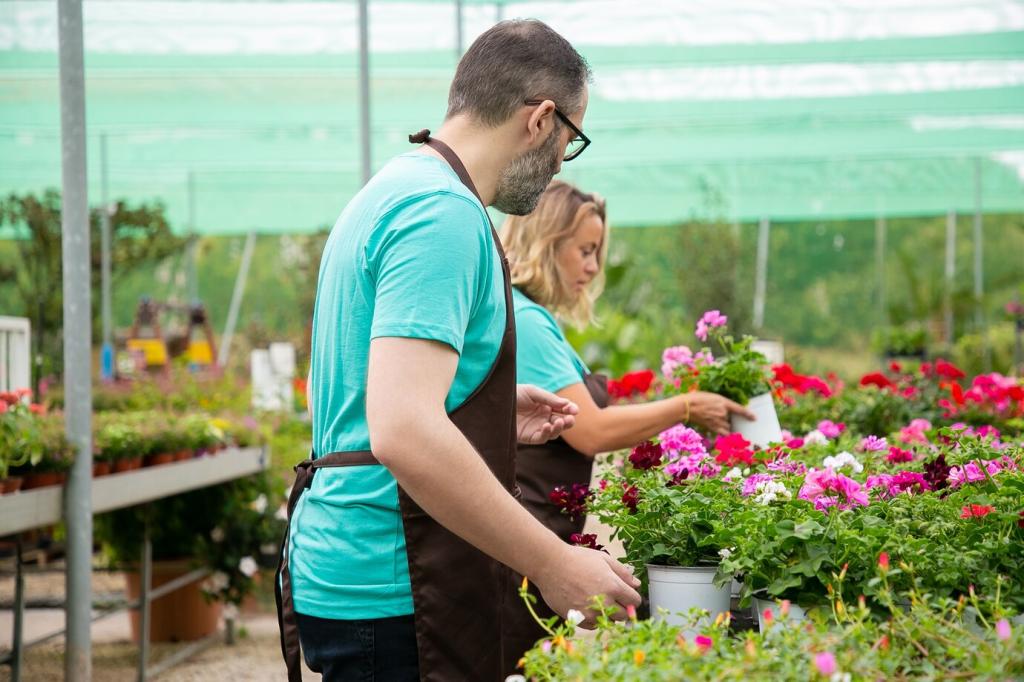
Vertical Gardening Solutions
Wall planters make it possible to grow herbs, flowers, and even veggies without sacrificing precious floor space. The key to successful wall planting lies in selecting durable materials and taking advantage of sunlight patterns unique to your urban environment. With careful placement, you can establish microclimates for different plant species, encouraging more diversity within a smaller area. Opting for planters made from recycled materials further boosts your sustainability efforts, and incorporating self-watering features can help minimize water waste, an essential consideration in cities where resources can be scarce.
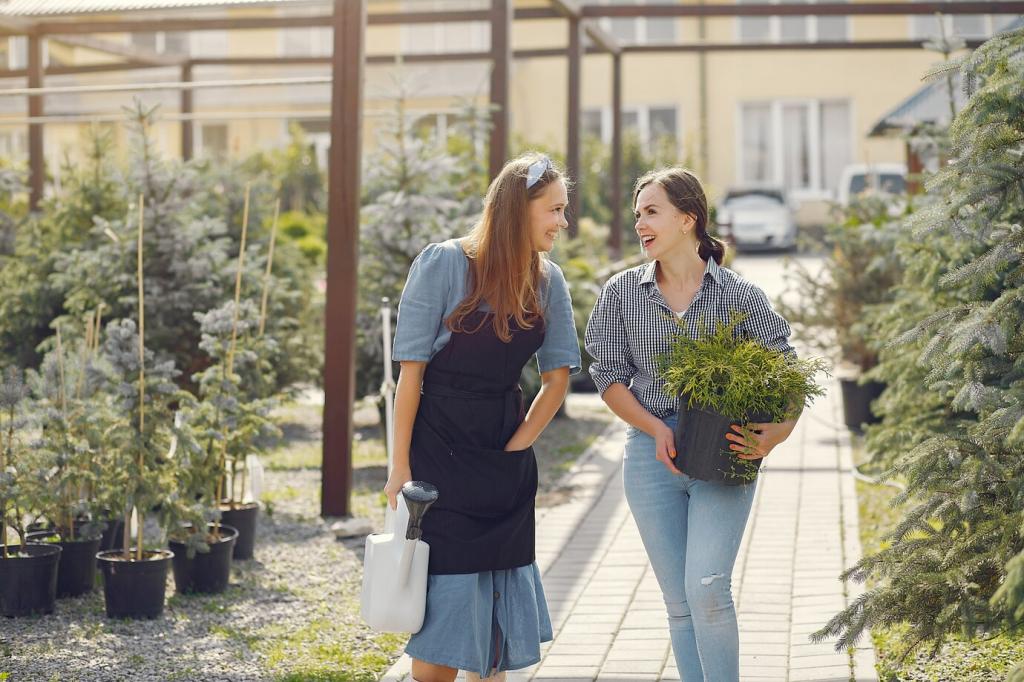
Collecting Rainwater with DIY Barrels
Setting up a simple rainwater collection system can drastically reduce your dependence on municipal water. By diverting rain from your rooftop into storage barrels, you capture a natural, untreated water source that is ideal for plants. With just a basic kit and a sturdy container, even renters can take advantage of this technique. Regularly cleaning your barrels prevents the buildup of debris or algae, ensuring the water remains fresh for garden use. This sustainable practice not only cuts costs but also makes your gardening efforts more resilient during dry spells or water restrictions.
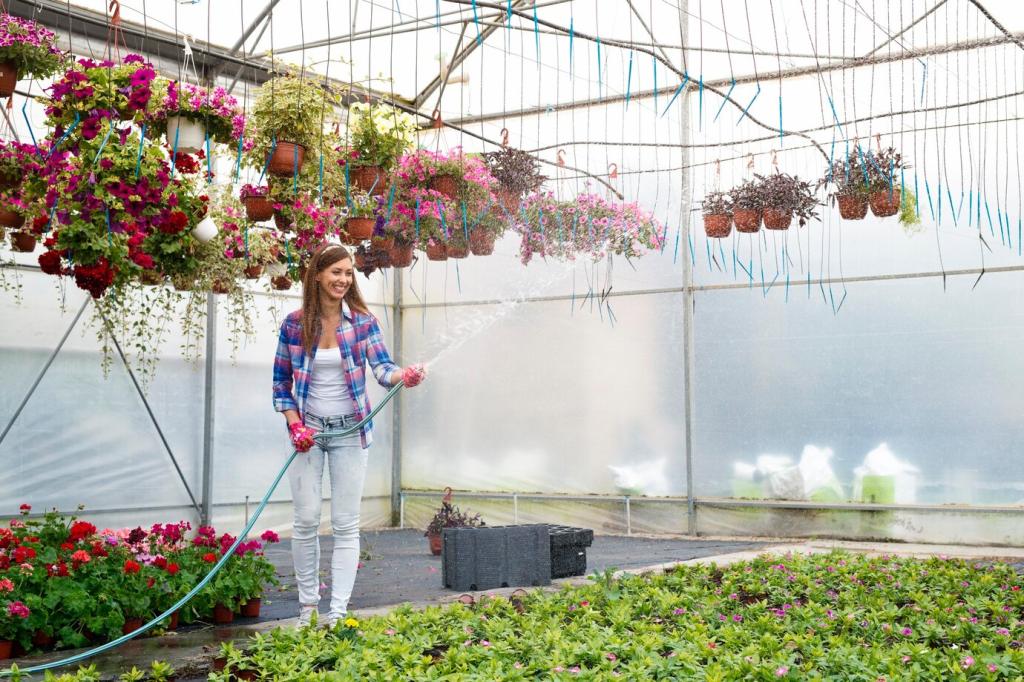
Mulching to Reduce Evaporation
Mulching is a straightforward yet highly effective way to retain soil moisture. Layers of organic mulch, such as shredded leaves, straw, or bark, slow down evaporation and keep soil temperatures more stable. This reduces how often you need to water, protects plant roots from temperature extremes, and improves soil fertility as the mulch breaks down. Mulching also discourages weed growth, further conserving both water and your energy spent maintaining your urban oasis. Choose locally sourced mulching materials to further reduce your environmental impact and close the loop on organic waste cycles.
Composting in Compact Spaces
Bokashi Buckets for Indoor Composting
Bokashi composting uses a special inoculant to ferment food waste in a sealed bucket, making it a practical solution for apartments and indoor environments. This no-smell, no-mess system breaks down all types of kitchen scraps, including dairy and meat, which traditional compost bins can’t handle. After a couple of weeks, the fermented contents can be safely buried in your soil or added to outdoor compost, rapidly boosting nutrient levels. The compact design of Bokashi buckets fits easily under a sink or in a cupboard, turning your food scraps into valuable resources instead of landfill fodder.
Vermicomposting with Worm Bins
Vermicomposting harnesses the power of worms to transform organic waste into fertile castings that plants love. A modest worm bin can thrive on a balcony, under a stairwell, or even in a kitchen corner. By feeding your worms peelings and coffee grounds, you accelerate decomposition and create a steady supply of natural fertilizer. Maintaining the right balance of bedding and moisture ensures your worm bin remains odor-free and efficient. The castings produced are a potent addition to potting mixes and garden beds, closing the nutrient cycle right where you live.
Compact Tumbling Composters
Tumbling composters are designed for tight spaces and make turning organic matter simple and odorless. Their sealed, upright design discourages pests and speeds up decomposition by allowing efficient aeration. Placed on patios or rooftops, tumblers are easy to rotate, letting you mix materials without manual labor. This setup keeps compost consistently moist and aerated, leading to quick results. Using a tumbler, even city gardeners with minimal space can benefit from homemade compost, reducing their dependence on store-bought soil amendments and packaging waste.
Upcycling and Reusing Materials
Don’t throw away those tin cans, plastic bottles, or old buckets—transform them into unique planters. These vessels, when properly cleaned and modified for drainage, are perfect for growing herbs, flowers, or small vegetables. Decorating your repurposed planters adds personal flair to your garden while extending the life of everyday items. This practice encourages urban gardeners to see potential in what might seem like trash, reducing the need for purchasing new pots and contributing to a more circular economy within your home.
An old chair missing a leg or a dresser with sticky drawers doesn’t have to go to waste. Integrate broken furniture into your garden design by turning them into plant stands, trellises, or fairy garden centers. Sand and seal the surfaces, plant flowers or succulents in drawers or seats, and watch your urban garden come alive with stories and nostalgia. This approach keeps larger waste out of landfills and injects your space with personality, showing that sustainability and creativity go hand in hand.
Plastic milk jugs, juice cartons, and even teapots can be made into custom watering cans with just a few quick modifications. Puncture holes in the lids or spouts to distribute water evenly and easily. Personalizing these makeshift watering cans means you won’t need to buy new plastic products, and you can tailor them to the specific needs of your garden. This simple hack is a constant reminder that small, thoughtful changes in daily habits can make a big difference to the sustainability of urban gardening efforts.

Organic Pest Management
Encouraging ladybugs, lacewings, and pollinators into your garden helps keep pest populations in check naturally. Planting nectar-rich flowers, letting certain herbs go to bloom, and avoiding pesticides provides a welcoming habitat for these helpful species. By boosting insect diversity, you create an interconnected mini-ecosystem that supports robust plant health and reduces the likelihood of pest outbreaks, allowing your edible crops and ornamentals to thrive in harmony with nature.
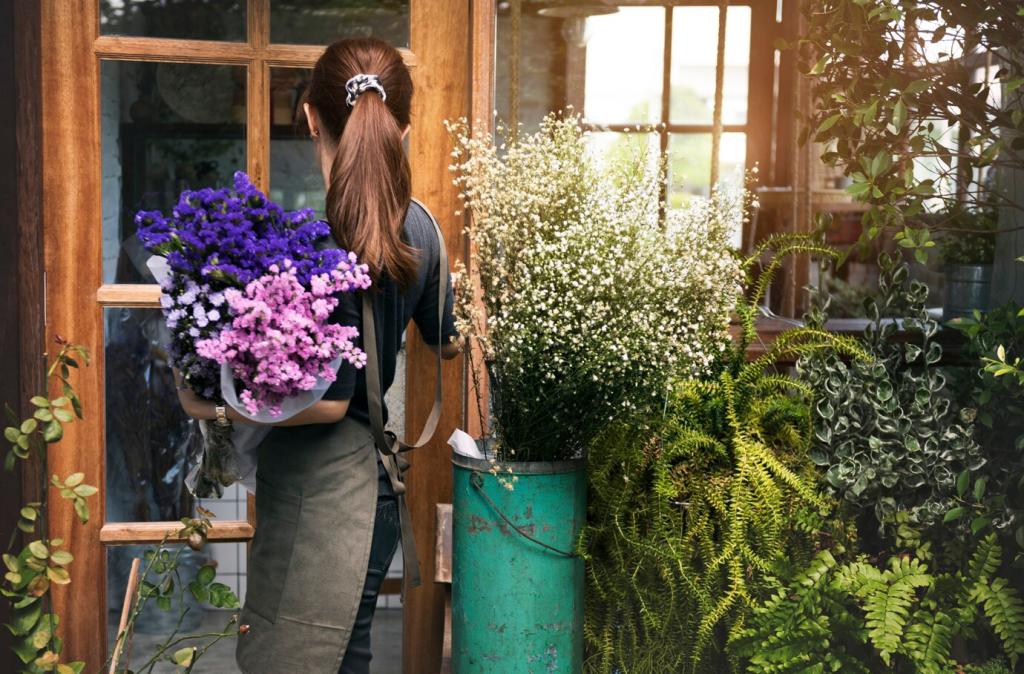
Previous slide
Next slide
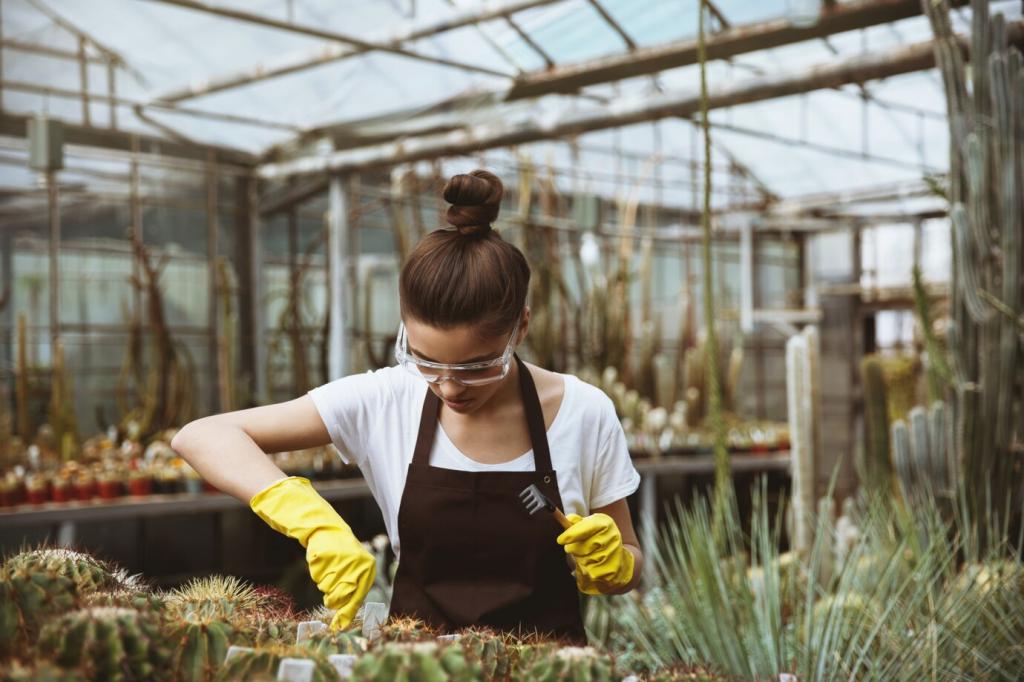
Energy-Efficient Gardening
Solar-Powered Garden Lighting
Using solar-powered lights lets you illuminate your garden paths or highlight features without adding to your electricity usage. Modern LED fixtures charge by day and provide gentle, pleasant light by night, enhancing your garden’s safety and ambiance without cables or outlets. Solar lights are available in a variety of styles and are simple to install, making them perfect for balconies and rooftop gardens. By opting for solar over conventional lighting, you align your gardening efforts with broader sustainability goals and make your outdoor space more inviting year-round.
Manual and Hand Tools Over Power Tools
Choosing manual or hand-powered garden tools instead of electric or gas-powered ones reduces energy use and emissions. Modern hand tools are lightweight, ergonomic, and perfectly suited to the smaller scale of urban gardening. Rakes, trowels, and pruners help you stay connected to your plants while fostering gentle, precise care. Maintenance is minimal, and there’s no need for extension cords or batteries. This approach cuts noise pollution, enhances your gardening experience, and keeps your personal energy consumption in check.
Reflective Surfaces to Maximize Sunlight
Strategically placed reflective surfaces such as mirrors, white walls, or aluminum panels can channel more sunlight into shaded corners of your garden. This simple hack helps optimize natural light for your light-loving plants without resorting to energy-intensive grow lights. Reflective elements are especially useful on balconies or among dense urban buildings where direct sun is limited. The result is healthier, more vigorous growth for less energy input, making your garden both brilliant and resource-efficient.
Year-Round Growing in Urban Spaces
By combining clear plastic bottles, old windows, or shower doors, you can craft mini greenhouses that fit onto windowsills or balconies. These upcycled shelters protect tender seedlings from cold snaps, wind, and pests, extending your growing season by weeks or even months. The contained environment inside a mini greenhouse maintains humidity and warmth, reducing water needs and accelerating plant growth. This innovation lets you start seeds early in the spring and keep greens going through autumn, all with a resourceful twist on classic gardening.
